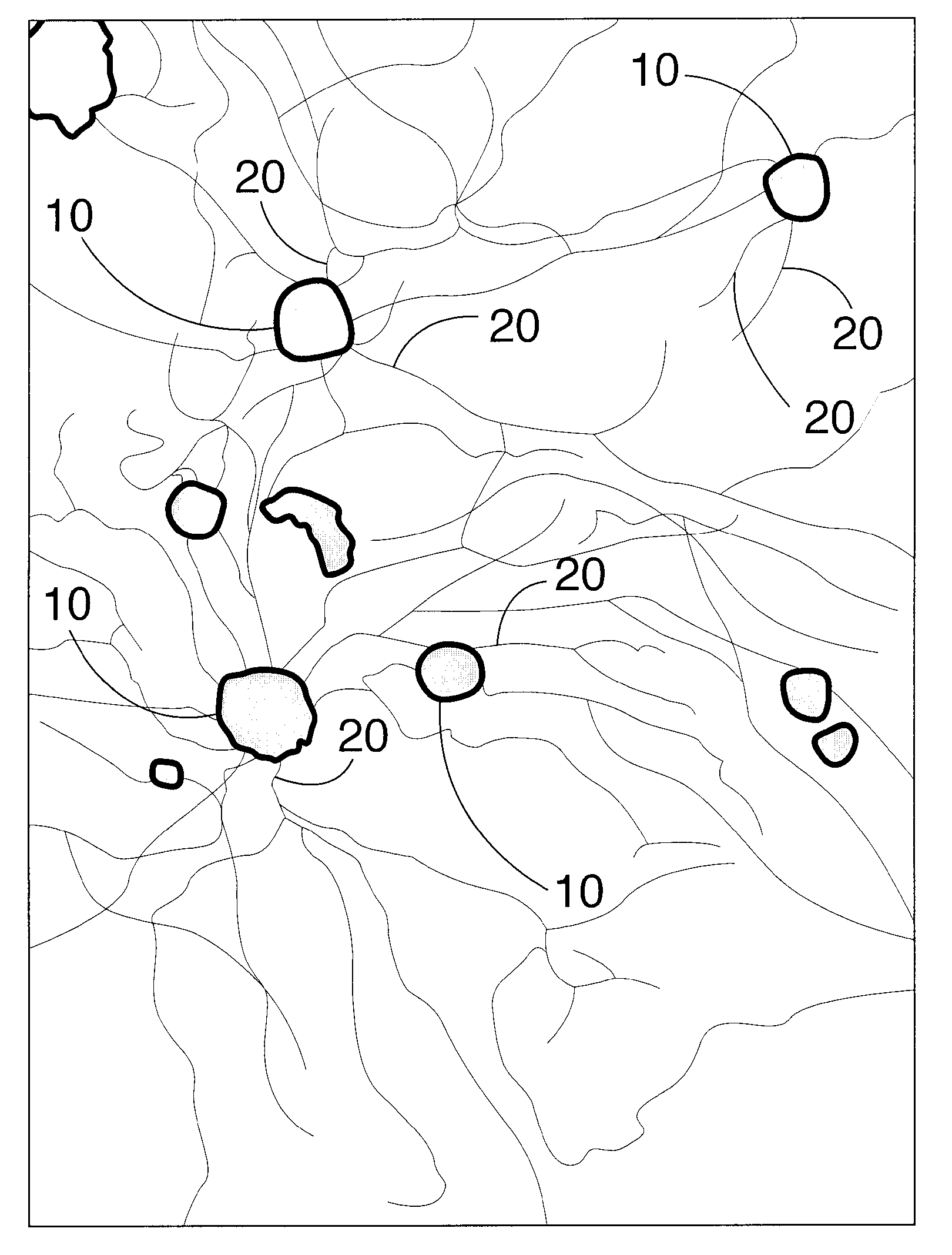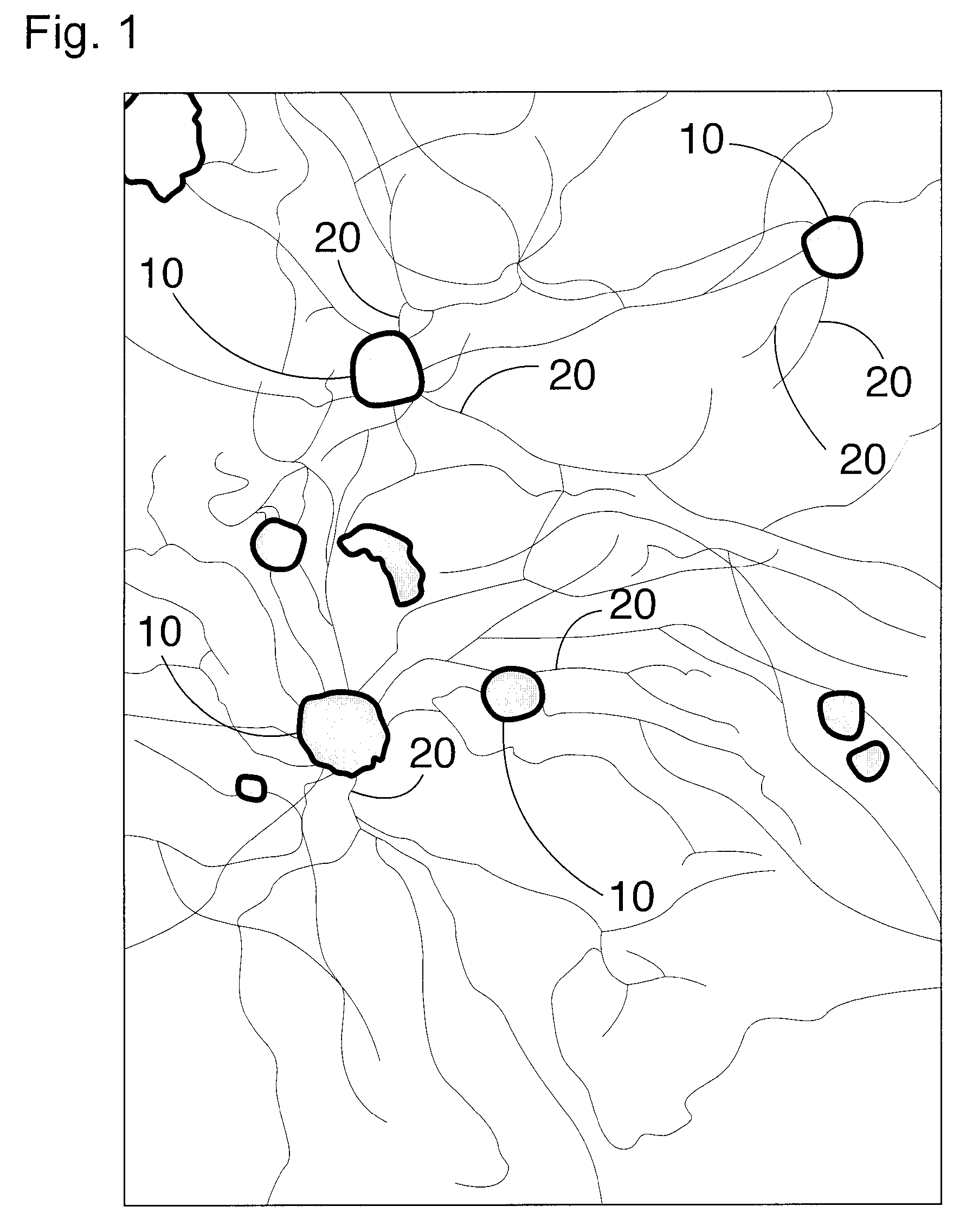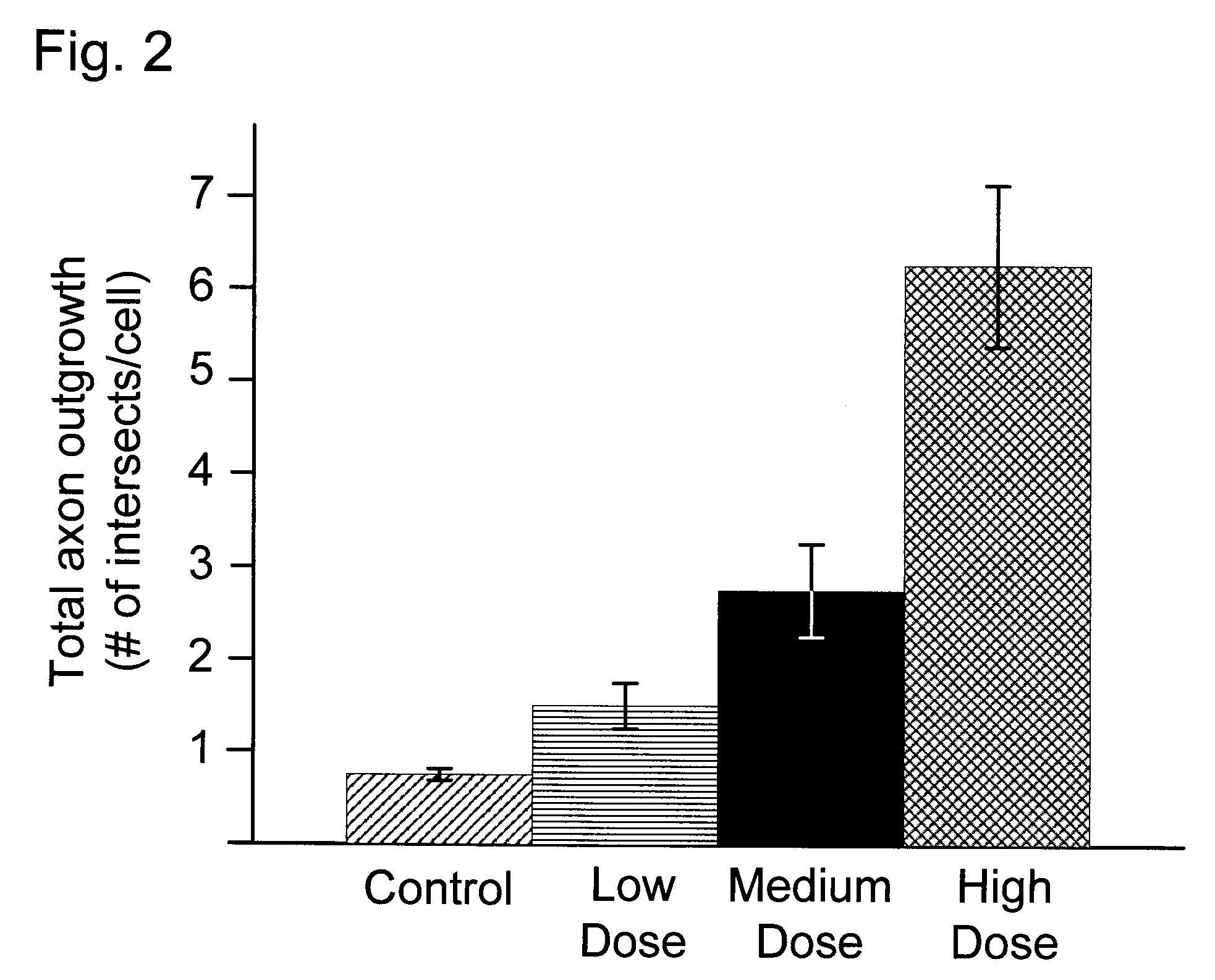Axon regeneration from adult sensory neurons
a technology of sensory axons and regenerated sensory neurons, which is applied in the field of regenerating sensory axons from adult sensory neurons, can solve the problems of unpredictable and tenuous function of regenerated sensory axons, significant impediments, and unfavorable prognosis, and achieves rapid screening
- Summary
- Abstract
- Description
- Claims
- Application Information
AI Technical Summary
Benefits of technology
Problems solved by technology
Method used
Image
Examples
example 1
Tissue Dissociation and Cell Culture of Adult Dorsal Root Ganglion Neurons
Specimen Handling: (Pre-Dissection)
[0030]A single adult male Sprague-Dawley rat weighing between 250 g-450 g was anesthetized by isofluorane induction. After no response to external stimuli, the rat was sacrificed by guillotine.
Specimen Handling: (Dissection)
[0031]The rat spinal column was removed dorsally from the cervical area to the tail.
[0032]Dorsal root ganglia (DRG) were extracted from the spinal column using pattern #5 Dumont Student Quality thumb forceps (product # 91150-20 supplied by Fine Science Tools Inc. North Vancouver, B.C., Canada) and 3-inch Vannas style iris scissors (product # 4112 supplied by CDMV, St. Hyacinthe, Q.C., Canada). Excised DRG tissue was placed into a cell suspension medium comprising pre-warmed Hams F12 nutrient mix (GIBCO® Prod. # 21700 supplied by Invitrogen Corp., Burlington, Canada, L7P 1A1; GIBCO is a registered trademark of the Invitrogen Corp., Carlsbad, Calif., USA) su...
example 2
Effects of Selected Growth Factors on Axon Regeneration in Adult Neural Cell Suspensions
[0045]A 20.1-mL suspension of live neural cells was prepared from a single adult male Sprague-Dawley rat as described in Example 1. 600 μL of the neural cell suspension was removed to a 1.5 mL Eppendorf centrifuge tube. The remaining 19.5 mL of cell suspension were divided into three 3 6.5 mL aliquots. The first aliquot received a Low Dose of growth factors comprising 0.1 ng mL−1 NGF, plus 1.0 ng mL−1 GDNF, plus 0.1 ng mL−1 NT-3, plus 0.01 nM insulin. The second aliquot received a Medium Dose of growth factors comprising 0.3 ng mL−1 NGF, plus 5.0 ng mL−1 GDNF, plus 1.0 ng mL−1 NT-3, plus 0.1 nM insulin. The third aliquot received a Medium Dose of growth factors comprising 10.0 ng mL−1 NGF, plus 50.0 ng mL−1 GDNF, plus 50.0 ng mL−1 NT-3, plus 10.0 nM insulin.
[0046]The well surfaces of a Nunc 96-well Optical Glass Bottomed CVG sterile plate were coated with a poly-DL-ornithine hydrobromide binding ...
example 3
Effects of Selected Small Molecules on Axon Regeneration in Adult Neural Cell Suspensions
[0047]A selection of drugs & bioactive compounds proven to be an innovative tool in drug discovery from the NIH-JDRF Custom Collection II was obtained in drug collection microplates from MicroSource Discovery Systems (Gaylordsville, Conn., USA) and stored at −20° C. The individual small molecule compounds were annotated for continuity in code series. Prior to use, a NINDS microplate was transferred to a 4° C. refrigerator for gradual thawing. About an hour before application, the NINDS microplate was transferred to a biosafety hood for thawing to be completed at ambient room temperatures while protected from light. Each of the drugs tested (stock concentrations were 10 mM) was diluted 1 / 100 in plating medium and then added to the neural cell suspensions in the 96-well plate to a final concentration of 10 μM (3 wells of neural cell suspension per drug type). The drug-treated neural cell suspensio...
PUM
| Property | Measurement | Unit |
|---|---|---|
| Temperature | aaaaa | aaaaa |
| Temperature | aaaaa | aaaaa |
| Temperature | aaaaa | aaaaa |
Abstract
Description
Claims
Application Information
 Login to View More
Login to View More - R&D
- Intellectual Property
- Life Sciences
- Materials
- Tech Scout
- Unparalleled Data Quality
- Higher Quality Content
- 60% Fewer Hallucinations
Browse by: Latest US Patents, China's latest patents, Technical Efficacy Thesaurus, Application Domain, Technology Topic, Popular Technical Reports.
© 2025 PatSnap. All rights reserved.Legal|Privacy policy|Modern Slavery Act Transparency Statement|Sitemap|About US| Contact US: help@patsnap.com



